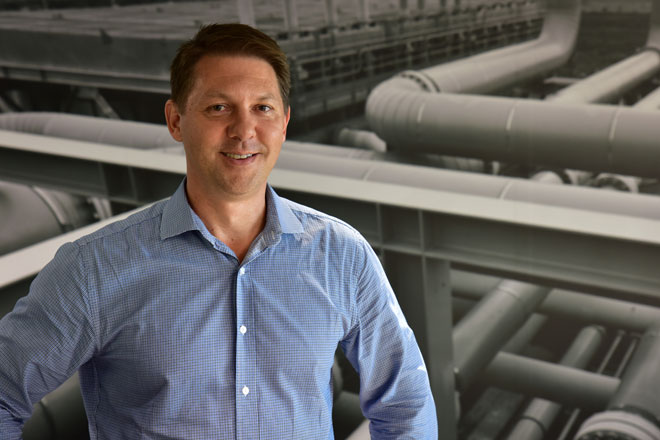Gladstone State Development Area
Gladstone State Development Area
Queensland’s economic powerhouse
The Gladstone State Development Area (SDA) offers a unique opportunity in Central Queensland. Declared in 1993, the Gladstone SDA is a defined area of land dedicated for industrial development.
- 26,934 hectares of land, with significant areas suited to large-scale, large-footprint industrial development and materials transportation infrastructure.
- Excellent access to infrastructure including major port, highway, rail, power and more.
- Located within the broader Central Queensland region, home to some of Queensland’s largest minerals processing, energy production, manufacturing and agricultural industries.
Gladstone SDA is the ideal investment location for projects of national and international significance.
Benefits
 Land suited to large-scale, large-footprint industry.
Land suited to large-scale, large-footprint industry.
 Established major industry precinct with opportunities for co-location.
Established major industry precinct with opportunities for co-location.
 Suitable for new and emerging industries, such as hydrogen.
Suitable for new and emerging industries, such as hydrogen.
 Adjacent to the Port of Gladstone, Queensland’s largest multi-commodity port handling more than 30 different products.
Adjacent to the Port of Gladstone, Queensland’s largest multi-commodity port handling more than 30 different products.
 Access to the Bruce and Dawson Highways providing connections to Queensland and interstate markets.
Access to the Bruce and Dawson Highways providing connections to Queensland and interstate markets.
 Access to the North Coast rail line, connecting to Brisbane, Rockhampton and north Queensland, and Bowen Basin mines rail networks.
Access to the North Coast rail line, connecting to Brisbane, Rockhampton and north Queensland, and Bowen Basin mines rail networks.
 Qantas Airways and Virgin Australian Airlines fly daily between Gladstone and Brisbane.
Qantas Airways and Virgin Australian Airlines fly daily between Gladstone and Brisbane.
 Excellent access to infrastructure corridors, gas, power and water.
Excellent access to infrastructure corridors, gas, power and water.
 Efficient processing of applications and requests.
Efficient processing of applications and requests.
 Streamlined, fast-tracked land sale application and contract process.
Streamlined, fast-tracked land sale application and contract process.
 Planning processes targeted for industrial development.
Planning processes targeted for industrial development.
 Close proximity to inter-related labour, materials and services.
Close proximity to inter-related labour, materials and services.
Location
The Gladstone SDA is located approximately 10 km north-west of Gladstone city and approximately 550km (around 6.5 hours) by road from Brisbane.
Industry suitability
The Gladstone SDA is perfectly positioned to meet the needs of large-scale industry and is ready to accommodate:
- large-scale, large-footprint industrial development including new and emerging industries
- industrial development requiring access to strategic port logistics and maritime facilities
- port-related activities
- industries to support major industrial development
- materials transportation infrastructure and utility and service infrastructure
- gas transportation infrastructure and other compatible infrastructure.
The Gladstone SDA is currently home to a diverse range of major industries, including:
- Rio Tinto (formerly Comalco) alumina refinery
- Orica chemical manufacturing complex
- Australia Pacific LNG
- Santos Gladstone LNG
- Queensland Curtis LNG
- Transpacific Industries waste management and recycling facility
- Southern Oil’s northern oil refinery
- Alpha HPA alumina production facility
- Fortescue Future Industries Global Green Energy Manufacturing facility.
Gladstone Land Acquisition Strategy
The Gladstone Land Acquisition Strategy will secure key linear infrastructure corridors and strategic sites in the Gladstone SDA to support the growth of industry in the Gladstone SDA and improve connectivity to the Port of Gladstone and Fisherman’s Landing.
While a final alignment for new infrastructure corridors is still being considered, the Coordinator-General identified the Targinie State Forest as the preferred east-west route to locate a multi-user infrastructure corridor considering topography, environmental values, habitat, land tenure, and infrastructure requirements.
As a result, the Targinie State Forest was revoked and the lots were transferred to the Coordinator-General on 3 December 2024 following consultation on the proposal.
As compensation for the Targinie State Forest, the Coordinator-General transferred over 1400 hectares of land on Curtis Island to the Department of Environment, Tourism, Science and Innovation. The land is high-conservation-value freehold land and is proposed to be added to the Curtis Island National Park to provide increased protection.
This land adjoins the existing Curtis Island National Park, Curtis Island Conservation Park, Graham Creek estuary in “The Narrows” section of the Great Barrier Reef Coast Marine Park, and the nationally important Port Curtis Wetland, and will complement the management of the surrounding terrestrial and marine conservation areas by the Queensland Parks and Wildlife Service and the Gladstone Port Authority.
The Coordinator-General will continue to work with key stakeholders to deliver the Gladstone Land Acquisition Strategy.
View the Gladstone SDA Land Acquisition Strategy map for further details.
Gladstone SDA success stories
-
Testimonial: LNG industry milestone for Gladstone State Development Area
Five years after receiving project approval from the Coordinator-General, Australia Pacific LNG (APLNG) celebrated the first shipment of liquefied natural gas (LNG) leaving its facility in Gladstone on January 9, 2016. Origin's Group Manager Pipelines & Networks Operations, David Johnson shares with us his experience in working with the Office of the Coordinator-General throughout the project.

Located nine kilometres north-west of Gladstone, the APLNG plant on Curtis Island is one of three LNG plant and pipeline projects facilitated by the Coordinator-General within the Gladstone State Development Area (SDA) and the Callide Infrastructure Corridor SDA.
As a joint venture between Origin, ConocoPhillips and Sinopec, the APLNG project includes a processing plant and export facility and 750 kilometres of underground gas transmission pipelines from the Walloons Gasfields.
To help facilitate the LNG projects, the Coordinator-General extended and varied the Gladstone SDA to include land on Curtis Island, where the LNG plants are now located, and identified a multi-user infrastructure corridor to contain underground gas transmission pipelines through to the plant sites on Curtis Island. The Coordinator-General also declared the Callide Infrastructure Corridor SDA to provide for the transportation of coal seam gas (CSG) to the Gladstone SDA, via underground transmission pipelines.
David Johnson said the Office of the Coordinator-General's facilitation of the development provided a valuable benefit to the delivery of the project and ongoing operation of the assets.
“The coordinated approach by the Office of the Coordinator-General was paramount in achieving project milestones by ensuring APLNG, landholders and the general community were adequately consulted; desired outcomes were effectively negotiated; and Government, gas proponents, landholders and the community worked together to achieve a common goal,” David said.
The Coordinator-General's SDA team worked with APLNG, along with other gas proponents for the Gladstone LNG Project and the Queensland Curtis LNG Project to coordinate the assessments and access to land for the three projects, while reducing impacts on the community and environment within the Gladstone SDA and the Callide Infrastructure Corridor.
David said the SDA licences in the common corridor provided structure and process, allowing the three gas proponents to achieve a coordinated approach rather than trying to negotiate individual outcomes with common landholders.
“Without the coordination and development of a common corridor facilitated by the Coordinator-General's team, it would have been left to gas proponents to individually negotiate easements with respective landholders. This would have caused considerable and unnecessary stress on individual landholders.
“The certainty of access for construction within the SDA also meant that construction methods, materials and design could be managed more effectively in a common corridor, with less impact on landholders.
“The regular meetings, as required under the corridor licences, between gas proponents and the SDA team coordinators, provided a forum for gas proponents to discuss any issues or concerns they may have had whereby each could learn from and ensure that design and construction efficiencies from a coordinated approach between proponents could be identified. This was vital to the successful construction of all three transmission pipelines in a timely manner.”
David said his experience with the APLNG project demonstrated that the Gladstone SDA and Callide Infrastructure Corridor offered definite economic and social benefits to business, industry and the community.
“Hubs such as Gladstone were able to take advantage of the increased employment and procurement opportunities. Local businesses such as hotels, restaurants, supermarkets, transport and construction saw benefits from increased trade and in turn were able to create additional employment opportunities.
“By recognising the emerging CSG-LNG export industry and supporting a dedicated LNG precinct on Curtis Island, Queensland is building a world class LNG industry for Australia.”
-
Alpha HPA chose the Gladstone State Development Area as the primary location for us to develop our HPA first project because of the proximity to industrial services in the Gladstone region but also because our key business partner, Orica is located there who is a key supplier of reagents to our process. Economic Development Queensland have been fantastic to deal with both in the initial land option agreement and then the final purchase of the land. They accommodated a number of modifications to the agreement that supported our project and its progression and the people at EDQ are highly motivated to make things happen for Alpha HPA.
Rob Williamson, Chief Operations Officer Alpha HPA
-
The Queensland Government has successfully negotiated the attraction of Southern Oil’s $16 million Advanced Biofuels Pilot Plant to be built in Gladstone.
Southern Oil’s Advanced Biofuels Pilot Plant will be Australia’s first commercial-scale advanced biofuels production facility. One million litres of fuel are anticipated to be produced within the next three years. Advanced biofuels production will support the US Navy’s Great Green Fleet initiative. The Australian Navy, Air New Zealand and Virgin Australia airlines are also investigating options for locally-produced aviation biofuel.
Southern Oil Refinery considered a number of options, including Western Australia and Victoria, when looking to establish a new waste lube oil refinery. Queensland was selected as the most viable market, largely due to its sustainable and export-oriented industrial biotechnology and bioproducts sector. The Queensland Government was also able to provide investment certainty and support.
Managing Director at Southern Oil Refinery, Tim Rose, said one of the main reasons that the business, which has been operating an interstate refinery since 2001, was persuaded to come to Queensland was because there were fewer barriers and more state government “enthusiasm”.
“In Queensland we were able to get land, which Trade & Investment Queensland helped us source, and we were able to buy in a State Development Area through the Queensland Government,” Mr Rose said.
“The State Development Area made it a lot easier in terms of getting the approvals and getting physically going and building the plant.
“It saved us about 18 months on a normal approval process that we would have had to go through in the other states.
“The simplicity and speed with which we could get our project up and running meant we could spend our money earlier on actually building the plant rather than on extended planning and approvals processes and all the costs of associated consultancies,” Mr Rose said.
Planning and development
Managed by the Coordinator-General, the Gladstone SDA supports economic development in a way that considers environmental, cultural and social values as well as existing industry and surrounding infrastructure within the region.
Industry precincts within the Gladstone SDA account for approximately 13,350 hectares and include land designated for:
- port related industry
- high impact industry
- medium impact industry.
Other precincts within the Gladstone SDA provide for:
- a materials transportation and services corridor to accommodate linear infrastructure
- protection of land for future industrial development, linear infrastructure and linear infrastructure corridor opportunities
- environmental management.
Approximately 1620 hectares of the Gladstone SDA on Curtis Island has been set aside as an environmental management precinct. The land is owned by the Coordinator-General, and the Department of Environment and Science is responsible for its management.
-
The Gladstone SDA regulation map (
 2.9 MB) defines the boundary of the declared Gladstone SDA.
2.9 MB) defines the boundary of the declared Gladstone SDA.The Gladstone SDA development precinct map (
 2.9 MB) forms part of the development scheme and identifies the precincts within the Gladstone SDA.
2.9 MB) forms part of the development scheme and identifies the precincts within the Gladstone SDA. -
The Gladstone State Development Area Development Scheme (
 1.6 MB) is a regulatory document that controls planning and development within the Gladstone SDA. The development scheme contains a development assessment framework for making, assessing and deciding applications and requests relating to development within the Gladstone SDA.
1.6 MB) is a regulatory document that controls planning and development within the Gladstone SDA. The development scheme contains a development assessment framework for making, assessing and deciding applications and requests relating to development within the Gladstone SDA.The SDA Development Scheme outlines development which is SDA assessable and SDA self-assessable. All other forms of development continue to be regulated by other authorities, which may include Gladstone Regional Council, Gladstone Ports Corporation Limited or the State Assessment and Referral Agency.
The development scheme is supported by a Public consultation policy (
 65 KB) that provides information on matters the Coordinator-General may consider when determining whether public consultation of an SDA application is required.
65 KB) that provides information on matters the Coordinator-General may consider when determining whether public consultation of an SDA application is required. -
The Coordinator-General assesses and decides all SDA applications and requests within the Gladstone SDA.
View information on how to make an SDA application or request, including pre-lodgement consideration, relevant fees and an online application form.
-
First approved by the Governor in Council in 2001, the development scheme has been amended numerous times. The current version was approved in May 2022 following an extensive strategic review.
Previous versions of the Gladstone SDA Development Scheme:
- Development scheme for the Gladstone State Development Area (November 2015) (
 9.2 MB)
9.2 MB) - Development scheme for the Gladstone State Development Area (September 2012) (
 264 KB)
264 KB) - Development scheme for the Gladstone State Development Area (December 2010) (
 186 KB)
186 KB) - Development scheme for the Gladstone State Development Area (July 2008) (
 268 KB)
268 KB)
Previous version of the regulation map:
- Development scheme for the Gladstone State Development Area (November 2015) (
-
The land use protocol (
 11.3 MB) sets out the procedures governing access to, exit from, and use of the Materials Transportation and Services Corridor precinct of the Gladstone SDA. The protocol applies to all persons authorised, permitted, or licensed to use the Materials Transportation and Services Corridor precinct.
11.3 MB) sets out the procedures governing access to, exit from, and use of the Materials Transportation and Services Corridor precinct of the Gladstone SDA. The protocol applies to all persons authorised, permitted, or licensed to use the Materials Transportation and Services Corridor precinct.
Land options in the Gladstone SDA
A significant portion of land within the Gladstone SDA is owned by the state government. The Coordinator-General owns 8217 hectares of land and the Minister for Economic Development Queensland owns 14,816 hectares of land within the Gladstone SDA. View the land ownership map (![]() 1.9 MB).
1.9 MB).
The Coordinator-General's land holdings include land for multi-user infrastructure corridors, industrial development and buffer areas. For more information on the land owned by the Coordinator-General contact the Office of the Coordinator-General on 1800 001 048.
Economic Development Queensland has industrial estates within the Gladstone SDA. The process of buying land from Economic Development Queensland is different to purchasing land from the private sector. Further information on the process is available through Economic Development Queensland.
Further information
For further information on the Gladstone SDA contact the Office of the Coordinator-General on 1800 001 048 or via sdainfo@coordinatorgeneral.qld.gov.au
For further information on SDAs, refer to our general fact sheets and guidelines.
Last updated: 20 Jun 2025
